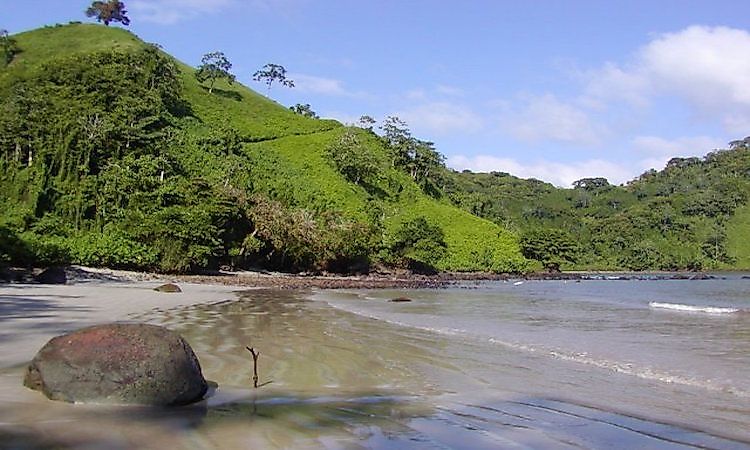UNESCO World Heritage Sites In Costa Rica

Costa Rica contains natural habitats which include the best dry forests from Central America to northern Mexico. These key habitats contain some of the rarest plants and animal species in Latin America and together they form a rich biological diversity. The richness of these environments serves as important tourist attraction spots in Costa Rica. Due to their economic and cultural significance, some sites have been inscribed in the UNESCO world heritage sites to enhance and promote conservation for future generations. These are the main sites.
UNESCO World Heritage Sites In Costa Rica
Area de Conservación Guanacaste
This site is considered an important natural habitat due to its wide biodiversity including the largest dry forest in Central America. The Area de Conservación Guanacaste was inscribed in 1999 and was extended through a private land property (St Elena) of 15,000 ha. The extension was meant to reduce interference from surrounding environments and also enhance the conservation of the native flora and fauna. The Area de Conservación Guanacaste is home to some rare plant and animal species which are only localized in the region. The site is very important because of the ecological processes taking place here which have a direct impact on the terrestrial and marine-coastal environments.
Cocos Island National Park
The Cocos Island National Park is located 550 kilometers off the coast of Costa Rica. The island has many animal species that have adapted to endemic species localized in the island alone. Some of the species include lizards, insects, birds, and freshwater fish. Coco island provides for an exclusive marine life which includes whales and hammerhead sharks. The underwater world of the national park is famous with divers who enjoy the breathtaking views of the pelagic species such as sharks, tuna, and dolphins. These and many other forms of marine life make the island a hub for biodiversity. It is only inhabited by Costa Rican Park rangers who take care of the natural resources.
Diquís Delta Precolumbian Chiefdom Settlements With Stone Spheres
The Diquís Delta Precolumbian Chiefdom Settlements are important cultural sites that represent the complex social, economic and political systems of the period AD 500–1500 in Costa Rica. The Diquís Delta contains unique elements and structures such as artificial mounds, burial sites, paved areas and a collection of stone spheres. The stone spheres have diameters of between 0.7 m and 2.57 m, and their use, meaning and significance is still a mystery and more so their production. The major looting of archeological sites that befell Costa Rica had threatened the preservation process of most culturally significant sites. However, the large sediment layers that had covered the spheres and buried them beneath for centuries prevented the looters from discovering the location of the stone spheres.
Talamanca Range-La Amistad Reserves & La Amistad National Park
The Talamanca Range-La Amistad Reserves/La Amistad National Park makes the largest national reserve in Costa Rica, even though a small portion of the park is located in Panama. The tropical rainforest and cloud forest is very dominant in the reserve and plays an important role in the ecological system. The region is inhabited by four different Indian tribes who co-exist peacefully and enjoy the benefits of the close cooperation between Costa Rica and Panama. The unique forests of Talamanca range are home to various species such as monkeys, jungle cats, birds and many other animals.
The Need To Protect The World Heritage Sites In Costa Rica
The conservation effort of these sites has faced various shortcomings over the years such as inadequate funding and mismanagement. This has stalled the process of ensuring that native flora and fauna continue to thrive without external threats from human activities and interests. The looting of archeological sites and unregulated tourism has also posed a major threat to conservation processes. However, zonation and creation of buffer zones seem to provide the right instruments to enhance the maintenance and sustainability of the sites.
UNESCO World Heritage Sites In Costa Rica
| UNESCO World Heritage Sites In Costa Rica | Year of Inscription; Type |
| Area de Conservación Guanacaste | 1999; Natural |
| Cocos Island National Park | 1997; Natural |
| Diquís Delta Precolumbian Chiefdom Settlements with Stone Spheres | 2014; Cultural |
| Talamanca Range-La Amistad Reserves & La Amistad National Park | 1983; Natural |











